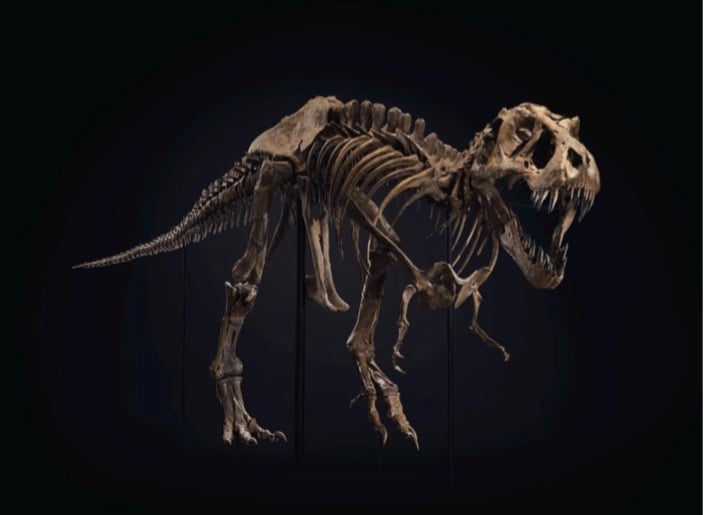Museums & Institutions
Abu Dhabi Has Been Unmasked as the New Owner of Stan the T. Rex, Which Sold at Christie’s for $31.8 Million
The world's most expensive fossil will be housed in a new natural history museum on Saadiyat Island.

The world's most expensive fossil will be housed in a new natural history museum on Saadiyat Island.

Caroline Goldstein

When Dwayne “The Rock” Johnson declared his love for dinosaurs and showed off a Tyrannosaurus Rex skull in his home office earlier this year, he quickly had to clarify that it was not, in fact, the $31.8 million skeleton that sold to an anonymous buyer at Christie’s back in 2020. This led many to wonder: If The Rock doesn’t have Stan the T. Rex, who does?
Well, now we know. The most expensive fossil ever sold at auction will star in a brand new natural history museum in Abu Dhabi.
The new home for the so-called King of Dinosaur was discovered by intrepid reporters at National Geographic, who have been tracking the extinct animal’s footprints by way of U.S. trade records. The magazine found that a 5.6-ton shipment with a recorded value of $31,847,500 (the exact price Stan sold for at Christie’s last October), was exported from New York to the United Arab Emirates back in May 2021.
Their hunch was correct, and representatives at the Abu Dhabi Department of Culture and Tourism confirmed to NatGeo that Stan would take up residence at the forthcoming Natural History Museum Abu Dhabi.
“Natural history has a new home here in Abu Dhabi, and we will tell the story of our universe through some of the most incredible specimens known to mankind,” the chairman of the Department of Culture and Tourism told the magazine. “These are rare gifts from nature that we are proud to protect and share with the world.”
Set to open to the public in 2025, the institution will be located in the culture-dense district on Saadiyat Island, and will tell the story of life on Earth through rare specimens. Luckily, the 377,000-square-foot museum will be roomy enough to hold the nearly 40-foot-long, 13-foot-tall skeleton.
Christie’s made headlines back in 2020 when they announced the star lot of its “hybrid” contemporary art auction would not be a painting or sculpture, but an almost 70-million-year-old prehistoric predator with 180 bones and “eyes the size of baseballs.” The specimen was consigned by the South Dakota-based Black Hills Institute of Geological Research as the result of a settlement agreement between two feuding brothers.
In addition to Stan, the museum has also acquired a fragment of the Murchison meteorite, which broke apart over Australia in 1969, spokesperson confirmed. A related sample of the Carbonaceous chondrite specimen was sold at Christie’s in February 2021 for $40,000—ten times more than its presale estimate of $4,000—where it was described as containing the “oldest particulate matter ever encountered on our planet.”